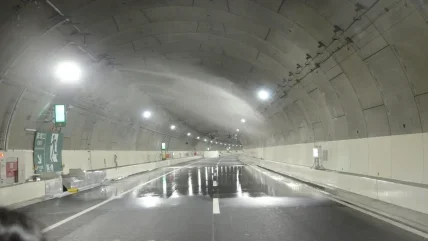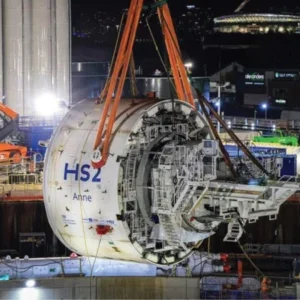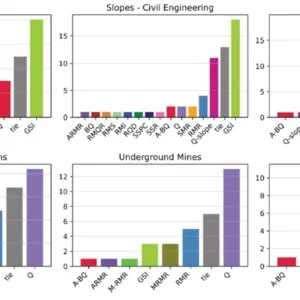
Mining and tunnelling operations present unique fire safety challenges due to the confined spaces, flammable materials, and harsh working conditions underground.
To effectively address these risks, water-mist fire underground suppression systems have emerged as a reliable solution. The principles of the method and the technological options available are discussed below, such as available from Fogmaker, a leading manufacturer supplying this type of fire safety equipment to the underground mining and tunnelling industries.
Principles of water-mist technology
Water mist systems employ the principle of using finely atomised water droplets to suppress fires.
In mining and tunnelling environments, where ventilation and limited access can complicate fire response, water-mist technology offers several advantages.
The fine droplets significantly increase the surface area of the water, enabling rapid heat absorption and cooling. As the water droplets come into contact with the fire, they vaporise into steam, displacing oxygen, preventing the re-ignition, and cooling down the affected area.
This triple-action of cooling, protecting, and choking leads to quick and efficient fire suppression.
System options
A range of system options are available, such as from Fogmaker, to address the specific needs of particular circumstances in the underground mining and tunnelling industries.
The options include:
- High-pressure systems: these water-mist systems are ideal for mining and tunnelling applications, utilising a compact pressurised cylinder with wet agent, discharged through specially designed nozzles. The high-pressure system delivers a finely atomised mist that effectively suppresses fires in enclosed spaces.
- Hydropneumatic systems: with rapid-fire, reliable detection being crucial to minimising the potential for extensive damage, the hydropneumatic option involves a detection liquid contained in an aluminium bottle. When exposed to high temperatures, the contained detection liquid then expands, triggering the release of wet agent in micro droplets.
- Robustness: underground mining and tunnelling environments can have some specially demanding challenges for operational equipment where they can be subject particularly to vibrations, shocks, and extreme temperatures. System options with durable components and robust construction are engineered to endure such the harsh challenging environments
Approaches to design and fitting
Designing and fitting water-mist systems for mining and tunnelling applications require careful consideration of the specific challenges of a location and the local regulatory requirements. Here are a few approaches for different scenarios:
- Mining equipment: loaders, drill rigs, and haul trucks, are prone to fire due to flammable materials and the challenging underground environment. Implementing high-pressure systems with strategically positioned nozzles would ensure adequate coverage and rapid fire suppression. Such systems can be customised to the equipment models and integrated with vehicle systems for manual and automatic activation.
- Tunnelling equipment: water-mist systems can be installed on tunnel boring machines (TBMs) to provide comprehensive fire protection. The high-pressure systems, with their ability to deliver a fine mist over a large area, are well-suited for such machinery and can be integrated with alarm systems for enhanced safety.
- Compliance with regulations: underground mining and tunnelling operations must adhere to specific safety regulations and standards. When designing water-mist systems, it is essential to ensure compliance with local rules and guidelines, and experienced engineering support can assist in developing strategies to meet the necessary requirements, including flow rates, nozzle spacing, and system activation methods.
CONCLUSION
Water-mist fire suppression systems offer an effective and reliable solution for fire safety underground. By considering the unique challenges and regulatory requirements, the systems can be successfully designed and fitted to protect lives and valuable assets.






